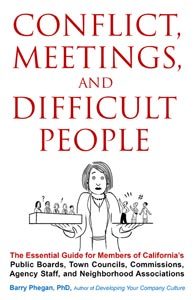 Corporations use our biological need to feel part of our group to sell us an endless stream of new clothes. By buying, then dumping these passing fashions, we personally contribute to the growing climate catastrophe. There’s been a big change in my lifetime. Here’s an example.
Corporations use our biological need to feel part of our group to sell us an endless stream of new clothes. By buying, then dumping these passing fashions, we personally contribute to the growing climate catastrophe. There’s been a big change in my lifetime. Here’s an example.
Long ago when I was young, “gym clothes” meant old clothes only fit for the gym. A torn T-shirt and old shorts were perfect. When I joined the Mount Tam Racquet Club in Marin in 1988 I showed up in a pair of old cargo shorts and a T-shirt. (30 years later those cargo shorts fell apart at the seams.)
In the early 2000s, another club member, a doctor, and partner at the Marin Cancer Centre, wore a faded pink undershirt and a pair of scruffy shorts. I recall one of the other members commenting that he was probably one of the wealthiest people in the club and questioning why he dressed like that. To me his clothes were comfortably familiar, what I knew as gym clothes. How out of tune I was.
Then and now, almost all the women at the gym wear tights and most men wear tracksuits. I’m an oldie and contrarian, wearing faded blue jeans in the winter and tired shorts in the summer.
Lookin’ Good
These gym dress conventions remind me of the one-liner, “You wouldn’t want to not look your best, would you?” It’s like the one Ronald Reagan used to overwhelm Jimmy Carter, “There you go again.”
Catchy one-liners like these have a ring of truth but are misguiding or disorienting. They divert your attention, close you down, and leave you wondering what happened. How do you reply? But if you follow the money trail, you’ll see that “look your best” translates as, “Spend money on a new outfit similar to your peers”.
I found a website called gymclothes.com that markets “fitness fashion clothing” to look “hot, fab, and fit”. If this doesn’t give you the creeps, congratulations! You’re well acculturated into our industrial society where consumerism controls our lives, where (old) gym clothes yield to fashion statements.
Interestingly, the current move to informality (such as dressing down at work, restaurants, traveling, and church) has increased clothing consumption. Today’s clothes are cheaper, we buy more, wear them less, and toss them sooner. The average American dumps 80 pounds of clothes annually.
Fitting In
When our self-worth depends on us looking acceptingly fashionable to our chosen peer group, how can we possibly rein in our excessive consumption and pollution, which bring climate change, inequity, and inequality?
Few in my gym would willingly wind the clock back and wear tattered discards. We’ve accepted the marketer’s aphorism, “What I wear is who I am.” I certainly want to look my best, not old and dated, even though I’m both.
I can see a solution, but it’s the long-term gradual shift from “looking my best” to “being myself”. Can you imagine that “myself” might mean that gray hair, wrinkles, and yesterday’s somewhat worn clothes might be OK? Can you imagine not having that latest kitchen appliance or not visiting the latest fashionable destination, be it the Antarctic, the Galapagos, or Bhutan?
The cultural change from consumerism to sustainability will be a long haul, and what form it will take is invisible to us right now. That’s the nature of evolution, the constant always-new adaptation to our ever-changing always-new environment.
Satisfaction ≠ Consumption
Our industrial society convinced us that consumption builds social acceptability and personal satisfaction. As we sink deeper into the climate-changing world, we must inevitably accept a new reality: that non-renewable consumerism as a basis for national growth, economic success, and corporate profits, is a failed path to fulfillment and happiness.
I won’t be here to see this next step in our evolution, but as a student of culture, I’m keenly aware that the seeds are already planted and sprouting into the more sustainable world we deserve and need. Perhaps, just as the mushroom hunter or aboriginal wildlife tracker can see signs that are invisible to most of us, some of you already see the early hints of a more sustainable culture.
Do you? Please tell.
§
We always dress appropriately for our culture. It’s human nature to want to fit in, to be accepted. Could we imagine otherwise? While the four outfits below are different, each is culturally appropriate and perfectly correct for its time and place.
LEFT: New Guinea, Your Everyday Penis Sheath.
CENTER LEFT: Japan, Meiji Power Outfit.
CENTER RIGHT: France, 1700s Man About Town.
RIGHT: USA, Business Suit.



 In today’s mercantile “world culture,” the USA’s Business Suit (how well-named and boring) is usually appropriate — the New Guinea Penis Sheath, not so much. For sure, future generations will see today’s clothing as strange, yet to us, they are as real as we are.
In today’s mercantile “world culture,” the USA’s Business Suit (how well-named and boring) is usually appropriate — the New Guinea Penis Sheath, not so much. For sure, future generations will see today’s clothing as strange, yet to us, they are as real as we are.
Thank you for reading.
Barry
Add Your Name below to my list to know when I have posted a new blog.




